By Die kalte Sonne, Josef Kowatsch
(Translated, edited by P. Gosselin)
The German DWD national weather service reports that the January 2021 mean temperature for Germany was 0.6 degrees Celsius, which is 1.1 degrees above the value of the old reference period 1961 to 1990. But compared to the current and warmer reference period of 1991 to 2020, the anomaly was -0.3 degrees.
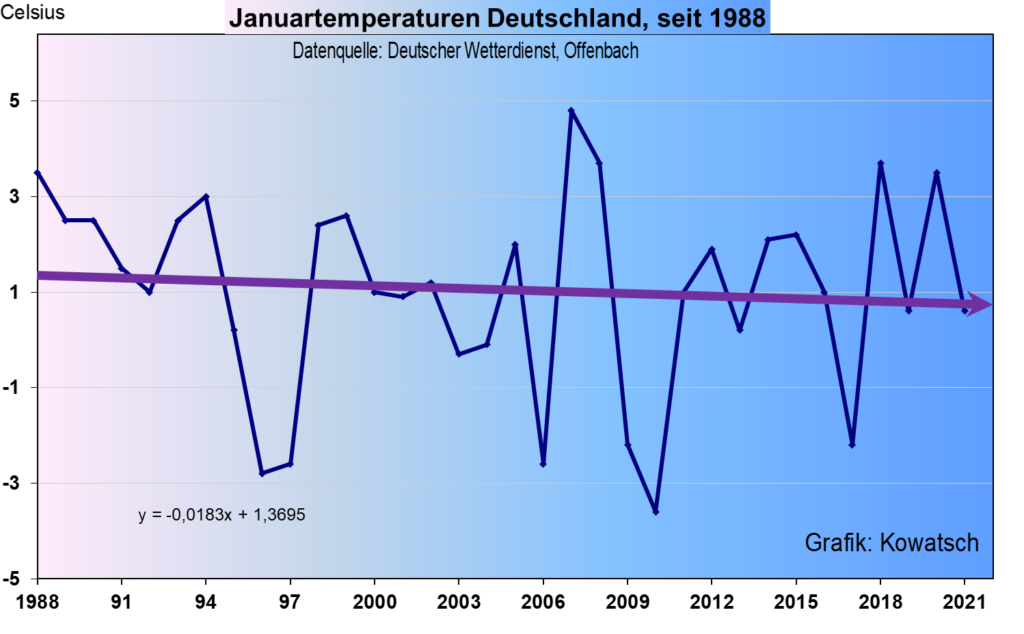
The above chart shows the trend for the last 30 years for mean January temperature. Chart: Josef Kowatsch
Since the DWD began recording data in 1881, January has become 2.1°C warmer according to the trend line.
However, it must be taken into account that the year in which the DWD records began was during a cold period; the end of the Little Ice Age, which did not actually come to an end until around 1900.
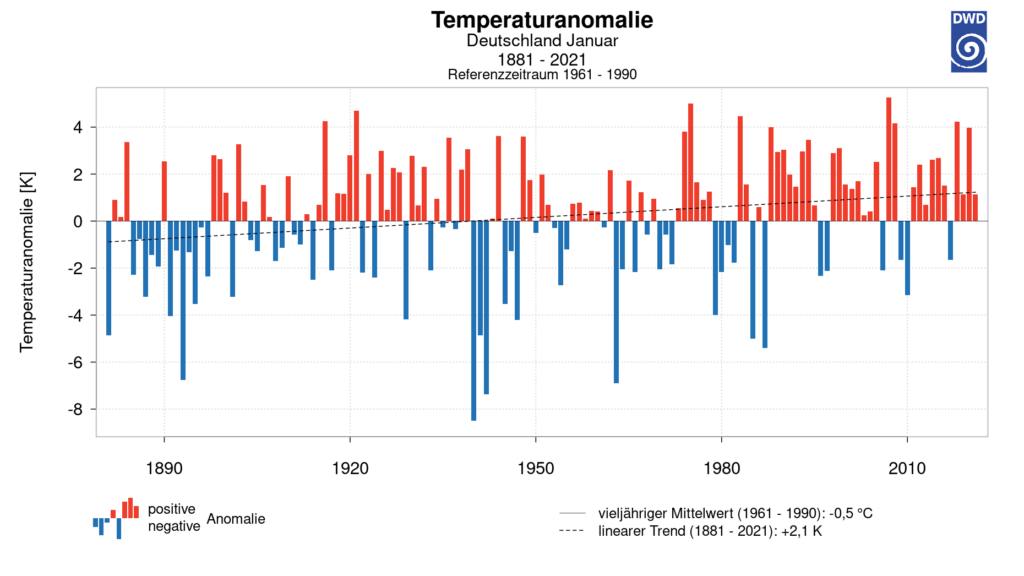
Germany’s mean January temperatures since 1881. Chart DWD.
And when we remove the last 20 years of the Little Ice Age, this is what the trend looks like:
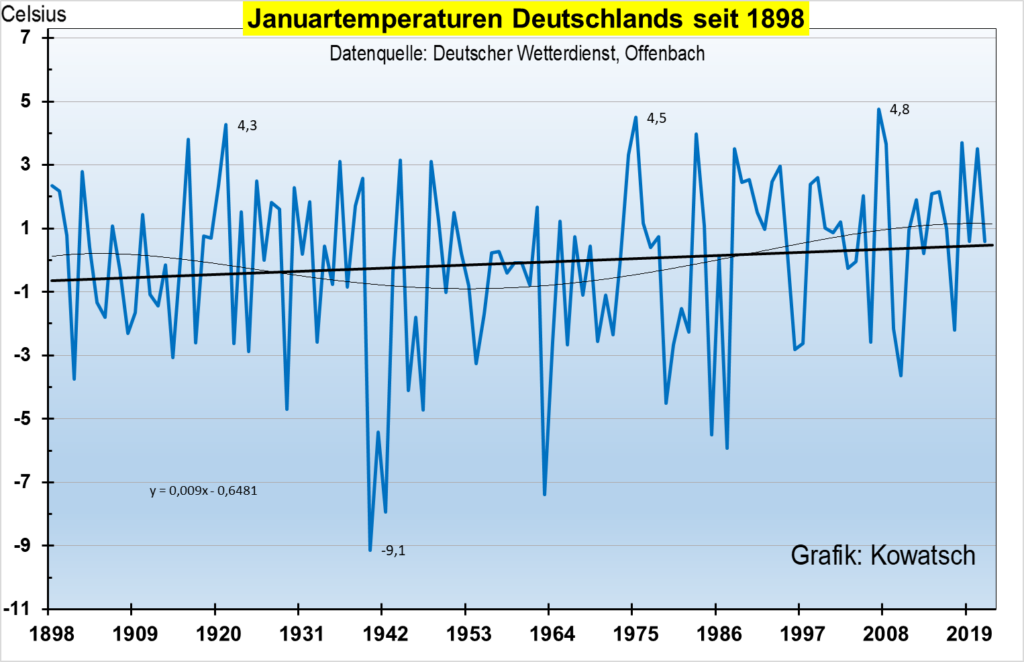
The graph shows only a small increase of about 1°K. You can also see 3 sections, first a good 40 years at a higher level, then about 45 years of colder January months, and then a temperature jump in 1987/88 to a higher plateau.
Germany’s UHI
Germany has changed a lot in the last 150 years. Building development is spreading into the once open spaces, and the heat islands around the stations are constantly increasing.
Now, of course, there are weather stations that have remained rural during this period, for example Amtsberg-Dittersdorf at the foot of the Erzgebirge (Ore Mountains):
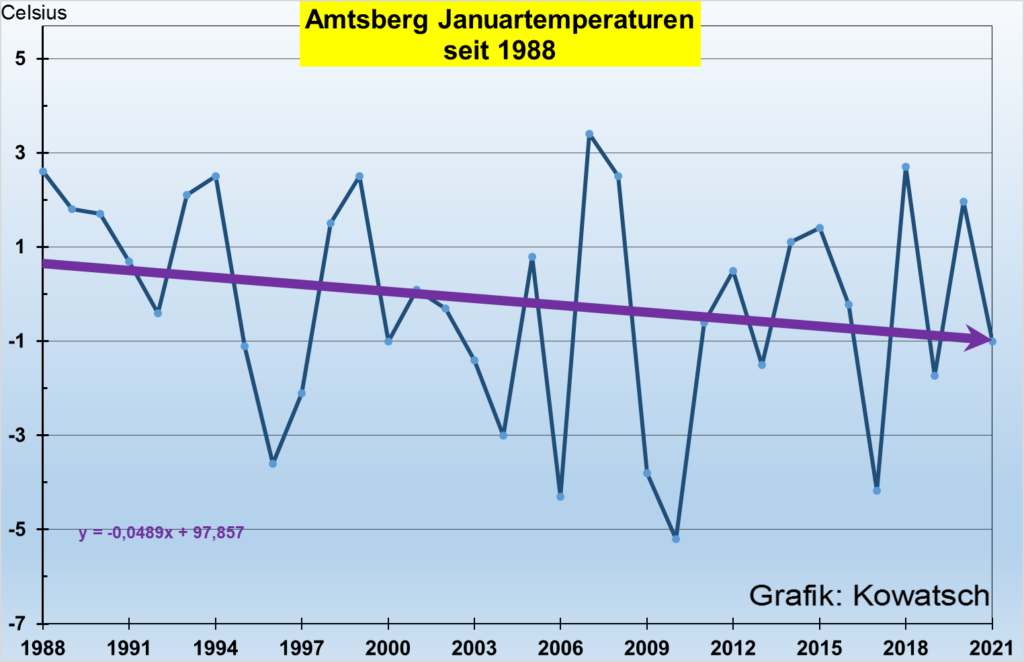
January mean temperature at this rural station has been falling over the past 30 years.
But even urban Hamburg shows a clear January cooling, the weather station is located at the airport:
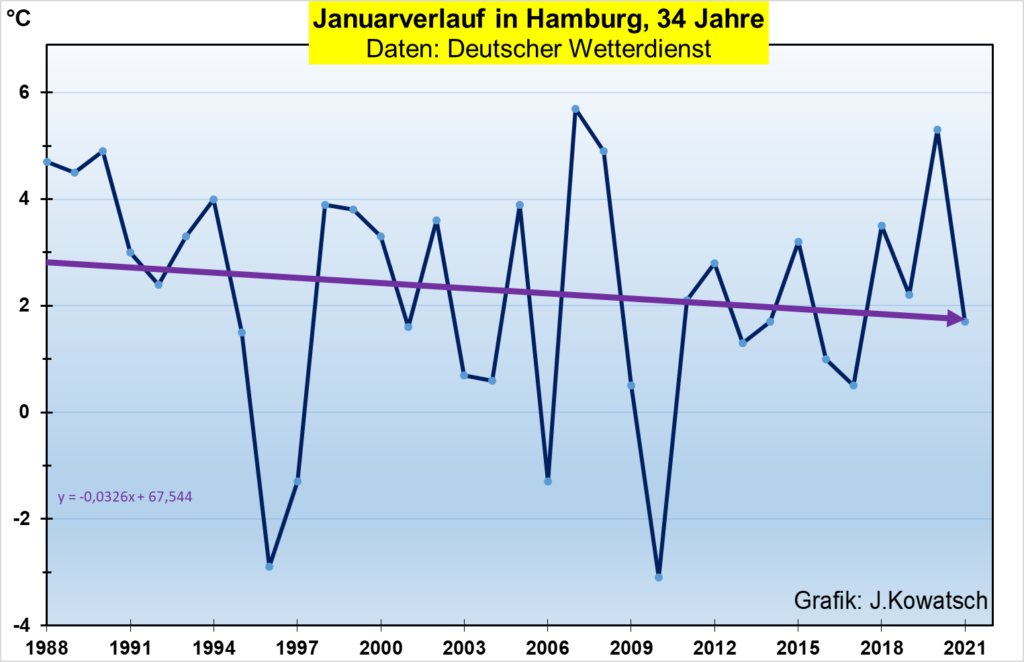
In addition, there are of course also stations strongly influenced by the urban heat island (UHI) effect, whose environment has changed considerably since 1988 due to human development. One example is the once rural weather station Hof shown below in comparison to Netzstall, a farm near Nuremberg:
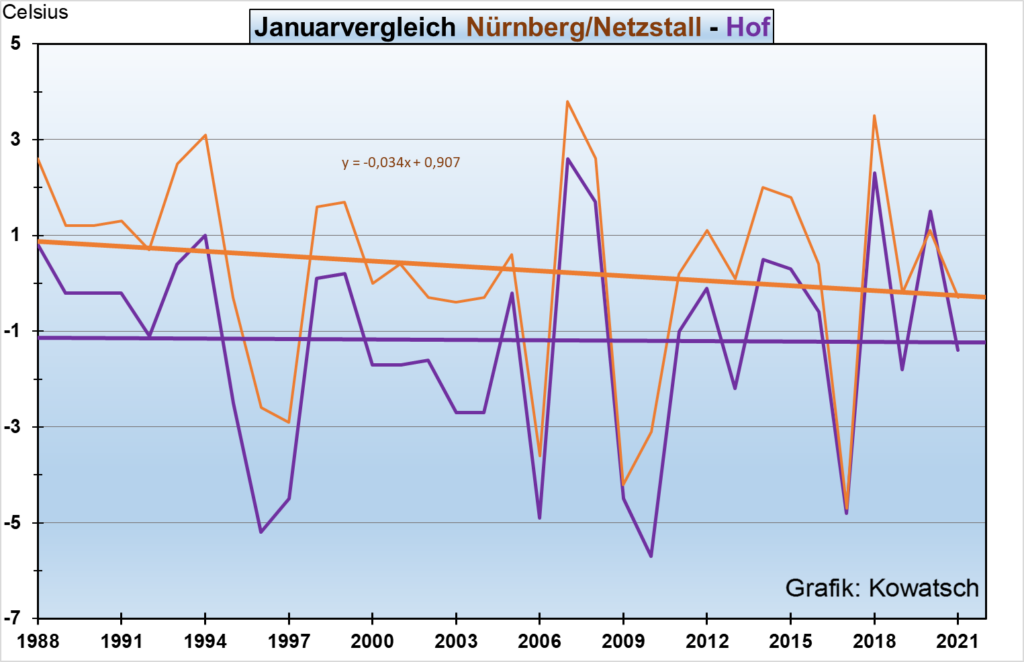
The Netztall farm station has cooled while the now commercial area of Hof has remained steady.
The urban heat island affected Hof weather station has not shown any cooling since 1988.
The nearby Netzstall station has cooled. It should be noted, however, that the DWD moved the Netzstall station from an outlying district of Nuremberg to a residential area about 15 years ago.
And how does it look at the the top of mountains? What follows are January mean temperature charts for Germany’s Zuspitze, Brocken and Fichtelberg mountain summit stations:
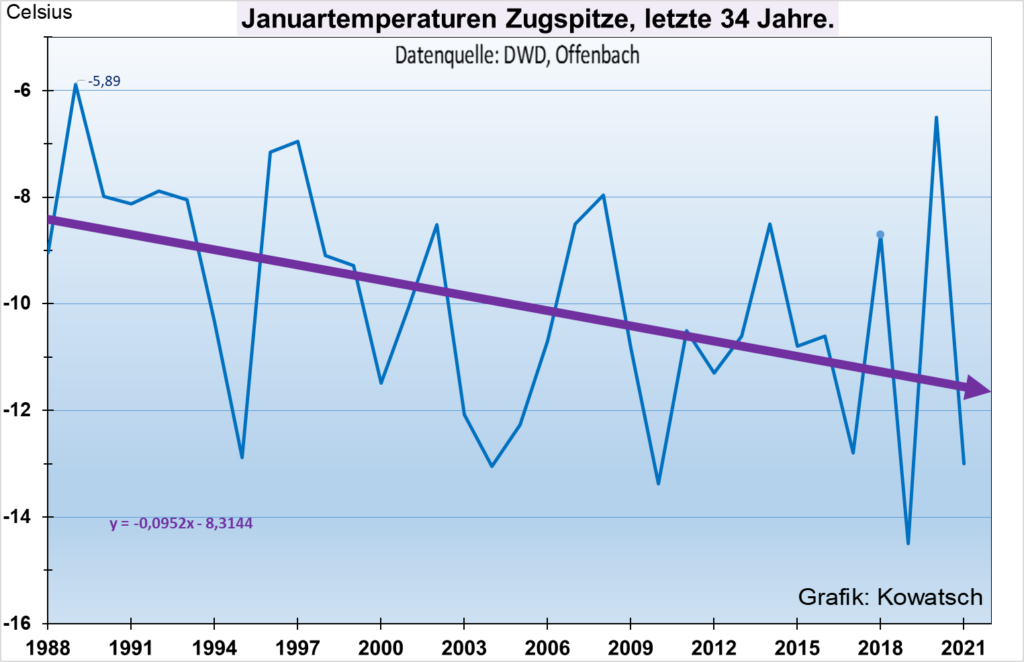
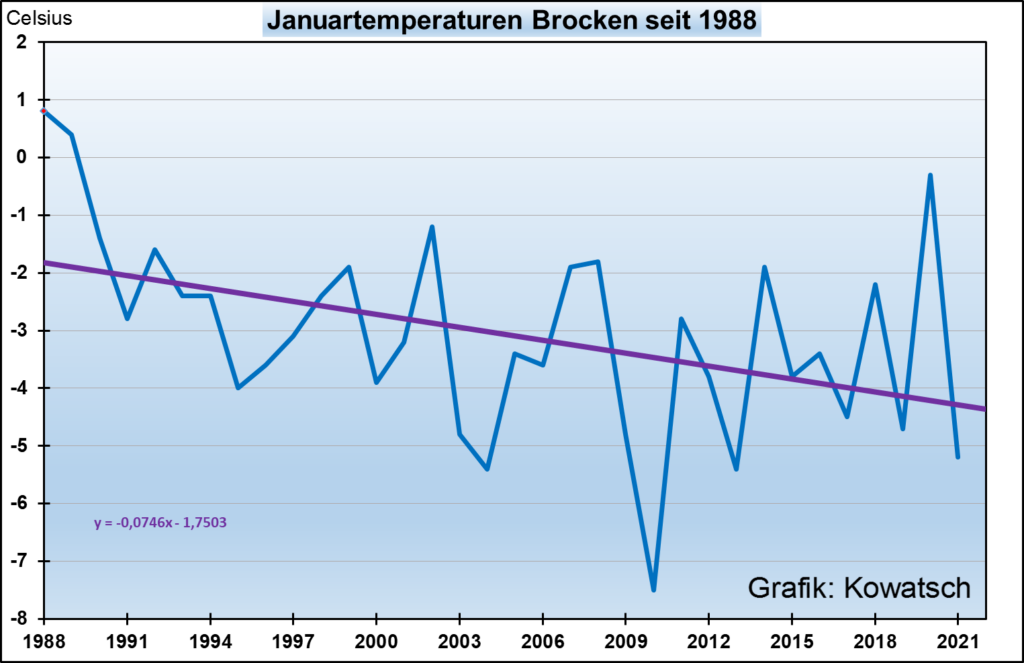
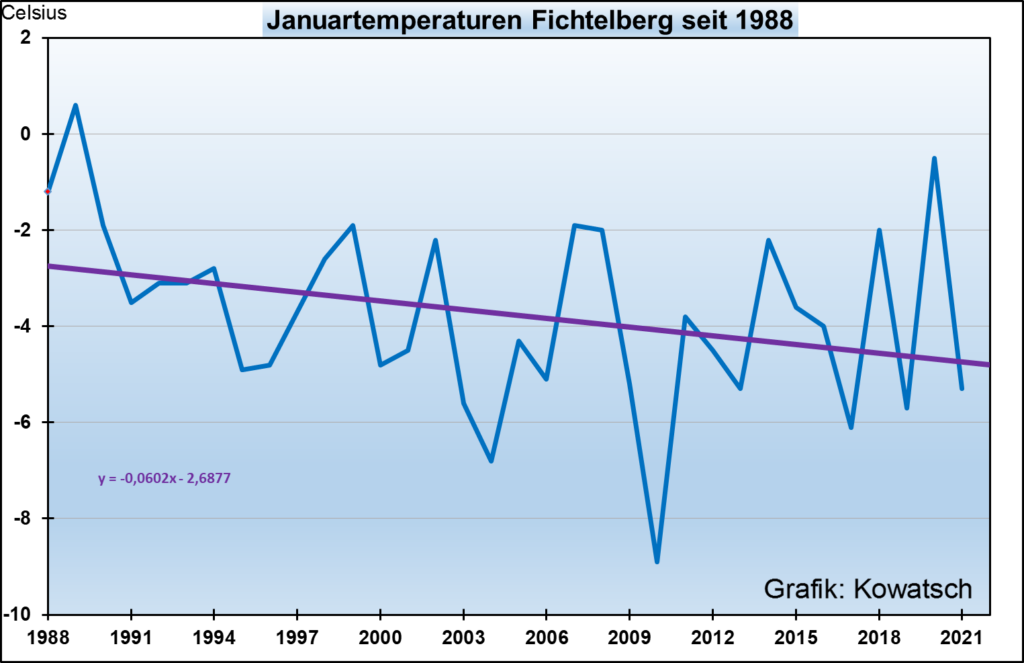
January mean temperatures at these three mountain peaks have fallen markedly over the past three decades. This is not what you’d expect to see in a warming world.





Hamburg apparently has about the same population, thus UHI, since about 1940.
A detailed report on the land use changes might suggest issues with the airport as a site.
Otherwise, the UHI effect is long built in.
Nice report.
John
” thus UHI, since about 1940.”
Very well observed. And as far as timing is concerned we are at the end of an interglacial.
Keep up the good work. Thank you b
Central Europe might not have seen any warming, but almost the rest of the entire world is warming twice as fast. ;-p
https://wattsupwiththat.com/2019/10/07/alarmism-exposed-the-entire-world-is-warming-faster-than-the-entire-planet/
Hope this comment finds you safe- after your explanation if the electricity is cut which you said was possible.
Q: How many Germans does it take to change a lightbulb?
A: Five – one to do it, and four to someplace in town where there’s electricity.
🙂
Q: How many Germans does it take to change a lightbulb?
A: Five – one to do it, and four to find someplace in town where there’s electricity.
🙂
Can you comment on the fact that NASA undeniably shows warming for January temps in the central Europe region over the past 30 years?
https://i.imgur.com/iBleTx9.png
Can you also comment on why you are presenting trends for station series that are uncorrected for station moves or other non-climate biases?
[…] few days ago we looked at Germany’s mean temperature trend for January, and found that the mid-winter month has been cooling over the past three […]
[…] Central Europe January Hasn’t Seen Any Warming In 30 Years. Rural Areas Have Cooled Markedly […]